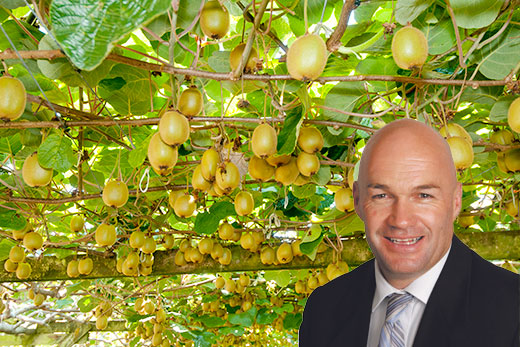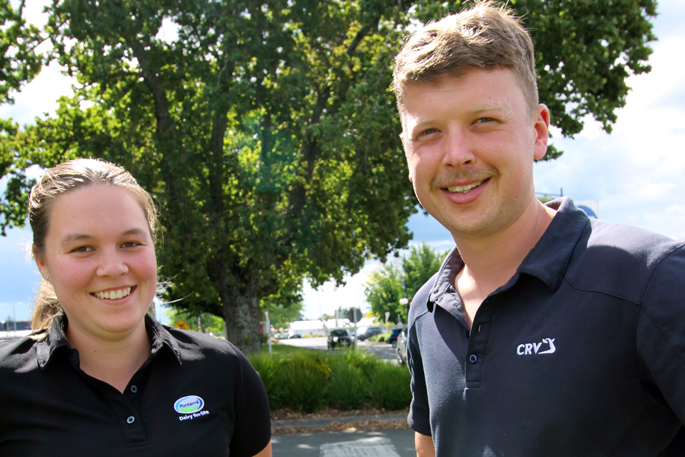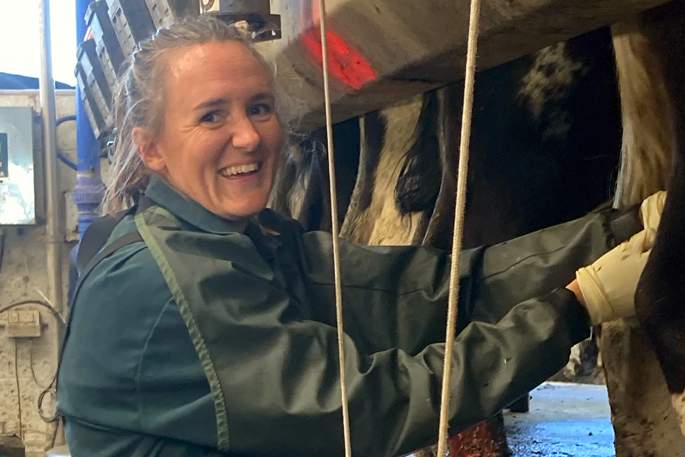New crop varieties, good consumer demand and sound marketing have put kiwifruit back on the map for prospective investors and orchard owners wanting to participate in the sector’s success.
Tauranga-based national country manager for Bayleys, Simon Anderson. Bayleys national country manager Simon Anderson, who is based in Tauranga, says his team is fielding daily calls from interested parties prospecting for opportunities to invest in a sector that has fully recovered from the devastating impact of the vine disease Psa-V in 2010, and looking to a bright future. “The impact of Psa was like a bomb going off for the industry and for the Bay of Plenty region. However, I think few people outside the region, or even the industry, appreciate just how quickly and comprehensively the industry dealt with the impact and turned itself around.” Instrumental to that turnaround was the changing out of gold kiwifruit hybrids, from the Psa-devastated Hort16a variety to the more Psa-tolerant SunGold fruit. Volume surge While Psa is still present in orchards, better management and plant tolerance are helping keep its worst early effects at bay. This has meant SunGold volumes have surged to 30 million trays last year, and likely to surpass 50 million this season. Meanwhile, the industry’s stalwart green crop continues to benefit from improved orchard husbandry and skills in Psa’s wake, and is anticipated to generate more than 70 million trays this year. Simon says the healthy outlook for crop volumes is being matched by strong consumer demand across both fruit types, with SunGold proving popular with both European and Asian buyers. In March Zespri announced it would be releasing a further 400ha each year of SunGold licences during the next four years, boosting potential fruit volumes by an additional 24 million trays on top of the 4800ha already planted and producing. Double value The overall goal of the industry is to double its export value to $3 billion by 2025. Even before the 400ha additional area for SunGold is accounted for, that variety is on track to earn $1 billion in sales by next year. Tauranga registered valuer Dylan Barrett, of Preston Rowe Paterson, says the positivity of growers and sound market returns are keeping prices firm for both SunGold and Green orchards. “We are seeing sale prices exceeding $350,000 a canopy hectare for high-producing Hayward Green canopies, while sales of SunGold orchards are generally exceeding $550,000 per canopy hectare. Some sales of high quality established SunGold orchards have more recently fetched prices of up to $700,000 per canopy hectare near Te Puke.” Dylan says these prices generally reflected net returns before tax of eight to 10 per cent dependant on forecasted production and running costs. Comparative returns are difficult to achieve elsewhere within the current low interest rate environment. “But of course there is a level of risk purchasers need to be prepared to accept, given the horticultural nature and the associated risk aligned with horticultural investment. “Some of the attraction around kiwifruit investment is the flexibility it offers growers who have options to continue on with their ‘day’ jobs with various management options available to growers.” Dylan cautions buyers not to be too overly optimistic when forecasting production for budgeting purposes given the varying nature of weather patterns between growing seasons. “A top-producing green orchard is capable of yielding crop volumes of 12,000-15,000 trays per canopy hectare, but a more conservative approach to budgeting would be to work on 11,000 trays, and treat anything over and above that as a bonus.” Investment syndicates There is increased interest from investment syndicates in the industry, something that could provide younger orchardists the opportunity to begin building their investment, rather than taking on significant levels of debt required to purchase an entire orchard. Long-time Bayleys Te Puke agent Mark ‘Snow’ Williams is quietly proud of how the sector has recovered from the Psa bombshell in 2010. “It is a sector that has many innovative, optimistic people in it and that shone through over that crisis. The ability to change out the old Hort16a so quickly for SunGold was a remarkable show of co-operation and unity which helped us get back up quickly.” Mark is enjoying brisk business in orchard sales, and can claim the top sale of a SunGold orchard at $700,000 a canopy hectare recently signed up. “But typically we are seeing SunGold commercial orchards selling at $600,000-$700,000 per canopy hectare, and green at $300,000-$450,000 per hectare, depending very much on orchard location and quality.” He predicts a significant portion of new SunGold area will be allocated to existing green growers wanting to convert over. Zespri chief executive Lain Jager says the confidence in SunGold comes from its excellent performance across the company’s 65 country markets during the last two years. “SunGold has generated tremendous excitement across our markets. This year SunGold was voted by fruit consumers in Spain and Germany as the best new fruit product on





0 Comments
Leave a Comment